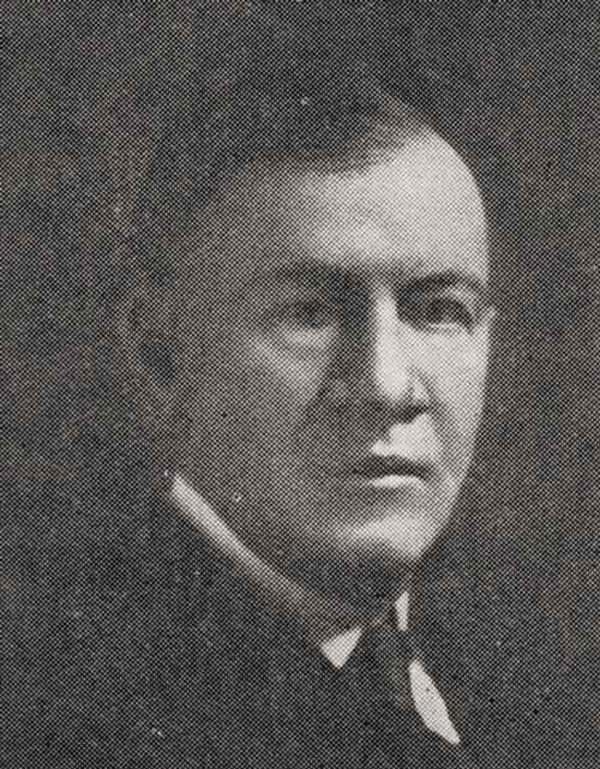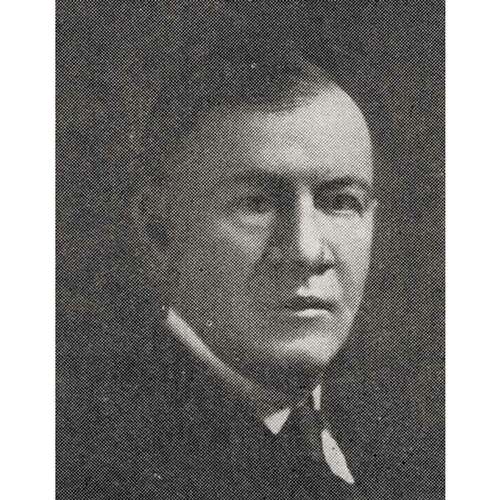
Source: Link
REID, Sir WILLIAM DUFF, contractor, railway executive, and developer; b. 20 Nov. 1866 in Sydney (Australia), eldest son of Robert Gillespie Reid* and Harriet Duff; m. 19 March 1894 Minnie Cormack in Kingston, Ont., and they had four sons and one daughter; d. 12 March 1924 in Montreal.
The life of William Duff Reid was encompassed by the activities of his father, a stonemason, bridge builder, and contractor. He was born in Australia only because Robert G. Reid worked there briefly as a stonemason; he left in 1869 when the family moved to his father’s home in Scotland. Brought to Canada in 1873 as a consequence of further railway projects undertaken by Reid Sr, he received his education at a variety of public schools in the United States and Canada, including the Galt Collegiate Institute in Ontario. Thereafter his life was absorbed by a succession of family enterprises.
Reid first demonstrated his ability as a builder when he joined his father and Sandford Fleming* in erecting the substructure of the Canadian Pacific Railway bridge at Lachine, Que., in 1885–86. In 1887, with his father and James Isbester, he engaged in the construction of an 86-mile section of the CPR from Algoma Mills (Algoma) to Sault Ste Marie, Ont. Again joining Isbester and Reid, he assisted with a branch of the Intercolonial Railway from Point Tupper to Grand Narrows, N.S., in 1887–90. His greatest achievement, however, was the design, construction, and operation of the Newfoundland Railway, which he supervised from 1890 while his father maintained his principal residence in Montreal. (He was so closely involved in the construction that he lost an eye during a blasting operation in 1891.) He was the primary negotiator for the contract of 1898, by which the government of Sir James Spearman Winter* extended the Reids’ operation of the railway for 50 years. On the incorporation in 1901 of the Reid Newfoundland Company Limited, he became vice-president and general manager. When his father died seven years later, having divided his shares amongst his three sons, W. D. assumed the presidency, creating a tension in the family which never subsided.
On the day of his father’s funeral in Montreal, W. D. held a private service in his St John’s boardroom in the presence of Governor Sir William MacGregor and Lady MacGregor and the heads of departments and employees of the St John’s train station. For 15 minutes, work was suspended throughout the railway system. Every train and steamer stopped. This public display of mourning served as a tribute to the accomplishments of Sir R. G. Reid, but it also signalled the newly acquired authority and independence of his son, who was then 41. By this time the Reid industrial empire had expanded into a variety of other activities, including steamer transportation, electric light and power, a trolley system in St John’s, and a graving dock. As president, he now sought further opportunities, particularly in developing the timber and mineral resources of the huge land grants the family had acquired in building the railway. By 1911 the company would become, in the words of the Newfoundland journalist Patrick Thomas McGrath, “the largest paymaster in the Island to-day, next to the Government itself.”
A proponent of confederation with Canada, Reid had devoted his considerable resources to this cause in the elections of 1900 and 1904. The first of these contests was fought in large measure over the desirability of the 1898 contract, which was strongly opposed by Robert Bond, the head of the Liberal party. Despite W. D.’s efforts Bond was successful and in 1901 he forced the Reids to agree to new terms. Four years later the family tried to negotiate a sale of the railway to the government of Newfoundland, but Bond, who had been re-elected in 1904, turned them down. In the election of 1908 Reid backed Bond’s rival, Sir Edward Patrick Morris*. When this contest ended in a tie, he again campaigned for Morris, who assumed the prime ministership in 1909 with a policy of creating employment through the building of railway branch lines. Reid subsequently called in his political credit and was rewarded with a contract for six such lines, four of which he completed. With these enterprises in mind, McGrath attributed the apparent progress in the colony to the “transforming genius” of the Reids. But the branch lines proved to be unprofitable and difficult to maintain.
Prior to 1914 Reid was developing a plan for a pulp and paper mill on the Humber River, but it was soon abandoned when war broke out. With costs rising and the construction of the branch lines curtailed, the company began to lose money, and he himself took a hand in the operation of the railway. He was irritable and arbitrary. According to a former employee, “He upset the entire staff with spur of the moment dismissals or promotions and a peculiar system whereby engines were assigned to particular jobs or sections and only certain engines were allowed to handle express trains. . . . Staff turnover was extremely high.” Although he was awarded a knighthood in the New Year’s honours list of 1916, he sank into a gloom in July of that year when Robert Bruce Reid, his eldest son and heir apparent, was killed at Beaumont-Hamel (Beaumont), France, fighting with the Newfoundland Regiment [see Owen William Steele*].
Facing financial losses and suffering from ill health, in 1917 he was invited by his brothers to abandon the direction of the Reid Newfoundland Company and serve as chairman of the board. He refused. When a meeting of the board was called in December for the purpose of removing him, he hired three Montreal gunmen to snatch the proxy votes secured by his brother Henry Duff Reid, but he failed. With Harry in control of the company, W. D. departed for Montreal, where he had maintained the family residence at 275 Drummond Street. Invalided by his illness, he survived there to see the realization of his plans for the sale of the railway. In 1923 the administration of Prime Minister Sir Richard Anderson Squires* took over the line as part of the final settlement of all questions outstanding between the Reid family and the government of Newfoundland.
[I am grateful for the personal recollections supplied by Ian Job Reid of St John’s, a grandson of W. D., during interviews in 1997. Mr Reid also provided access to family papers in his possession. r.r.]
AO, RG 80-5-0-213, no.3979. Canadian Pacific Arch. (Montreal), RG 1 (William Van Horne corr.); RG 2 (T. G. Shaughnessy corr.). Centre for Newfoundland Studies, Arch., Memorial Univ. of Nfld (St John’s), Reid papers. New South Wales Registry of Births, Deaths and Marriages (Sydney, Australia), Pioneers index, 1867/99. PANL, MG 17, esp. file 412. Cadet (St John’s), March 1915: 19–20; March 1916: 9–10. Canadian Railway and Marine World (Toronto), [19] (1916): 55–56; 27 (1924): 178. W. J. Chafe, I’ve been working on the railroad: memoirs of a railwayman, 1911–1962 (St John’s, 1987). Engineering News and American Contract Journal (New York), 18 (July–December 1887): 270–72. J. K. Hiller, The Newfoundland Railway, 1881–1949 (St John’s, 1981); “The politics of newsprint: the Newfoundland pulp and paper industry, 1915–1939,” Acadiensis (Fredericton), 19 (1989–90), no.2: 3–39; “The railway and local politics in Newfoundland, 1870–1901,” in Newfoundland in the nineteenth and twentieth centuries: essays in interpretation, ed. J. [K.] Hiller and P. [F.] Neary (Toronto, 1980), 123–47. P. T. McGrath, Newfoundland in 1911: being the coronation year of King George V and the opening of the second decade of the twentieth century (London, 1911). A. B. Morine, The railway contract, 1898, and afterwards, 1883–1933 (St John’s, 1933). P. B. Motley, “Double tracking of the Canadian Pacific’s St. Lawrence River bridge,” Canadian Railway and Marine World, [17] (1914): 149–56. A. R. Penney, A history of the Newfoundland Railway (2v., St John’s, 1988–90).
Cite This Article
Ronald Rompkey, “REID, Sir WILLIAM DUFF,” in Dictionary of Canadian Biography, vol. 15, University of Toronto/Université Laval, 2003–, accessed January 22, 2025, https://www.biographi.ca/en/bio/reid_william_duff_15E.html.
The citation above shows the format for footnotes and endnotes according to the Chicago manual of style (16th edition). Information to be used in other citation formats:
| Permalink: | https://www.biographi.ca/en/bio/reid_william_duff_15E.html |
| Author of Article: | Ronald Rompkey |
| Title of Article: | REID, Sir WILLIAM DUFF |
| Publication Name: | Dictionary of Canadian Biography, vol. 15 |
| Publisher: | University of Toronto/Université Laval |
| Year of revision: | 2005 |
| Access Date: | January 22, 2025 |



